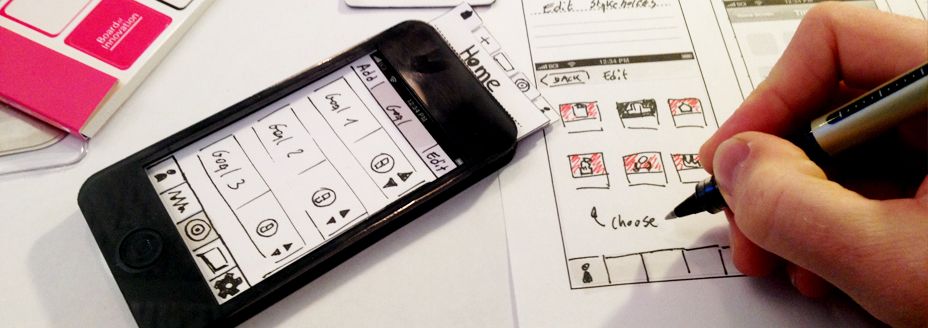The healthcare industry is in a constant state of evolution, driven by the need for improved patient care, operational efficiency, and technological advancements. One of the most transformative methodologies gaining traction in this sector is smart prototyping, particularly through the use of rapid prototyping services and robust UI/UX design services. This blog delves into the innovations and applications of smart prototyping in healthcare, highlighting its impact on various aspects of the industry.
Understanding Smart Prototyping
Smart prototyping refers to the development of digital prototypes that simulate the functionality of a product before it is fully developed. This approach allows healthcare professionals, designers, and developers to visualize ideas, test concepts, and refine products in real time. The benefits of smart prototyping are particularly pronounced in healthcare, where user experience can significantly affect patient outcomes.
Key Components of Smart Prototyping
- Rapid Prototyping Services: These services enable the quick creation of functional prototypes, allowing teams to iterate rapidly based on feedback. In healthcare, where user needs can change swiftly, rapid prototyping ensures that solutions remain relevant and effective.
- UI/UX Design Services: A well-designed user interface (UI) and user experience (UX) are crucial in healthcare applications. These services focus on creating intuitive and accessible designs that cater to the needs of healthcare professionals and patients alike. Effective UI/UX design can enhance usability, reduce errors, and improve overall satisfaction.
Innovations in Healthcare Through Smart Prototyping
1. Patient Engagement Tools
One of the most notable applications of smart prototyping in healthcare is in the development of patient engagement tools. These digital platforms enable patients to manage their health more effectively through appointment scheduling, medication reminders, and access to medical records.
Using rapid prototyping services, developers can quickly create interactive mock-ups of these applications, allowing healthcare providers to gather feedback from patients and staff. This iterative process ensures that the final product is user-friendly and meets the specific needs of its users.
2. Telemedicine Solutions
The rise of telemedicine has revolutionized healthcare delivery, especially during the COVID-19 pandemic. Smart prototyping plays a crucial role in designing telemedicine applications that facilitate virtual consultations and remote monitoring.
Through rapid prototyping, developers can test various features—such as video conferencing, patient monitoring tools, and chat functionalities—before finalizing the product. Effective UI/UX design services ensure that these applications are easy to navigate, making it simple for patients to connect with healthcare providers from the comfort of their homes.
3. Medical Devices and Wearables
Smart prototyping is also transforming the development of medical devices and wearables. These technologies have the potential to monitor vital signs, manage chronic conditions, and even deliver medication. However, their success hinges on user acceptance and ease of use.
Rapid prototyping services allow engineers and designers to create functional models of medical devices, enabling extensive user testing and feedback collection. With robust UI/UX design services, these devices can be made more intuitive, ensuring that patients and healthcare providers can use them effectively and comfortably.
4. Electronic Health Records (EHR) Systems
EHR systems are a backbone of modern healthcare, providing healthcare professionals with access to patient histories and data. However, these systems can often be cumbersome and difficult to navigate.
Smart prototyping allows for the rapid development of new interfaces and features for EHR systems. By leveraging UI/UX design services, developers can create streamlined workflows that minimize the time clinicians spend on administrative tasks, ultimately allowing them to focus more on patient care.
5. Training and Simulation
In healthcare, effective training is crucial. Smart prototyping can enhance training programs by creating realistic simulations of clinical environments.
Using rapid prototyping, developers can build immersive training modules that simulate real-life scenarios, enabling healthcare professionals to practice skills in a safe setting. UI/UX design services ensure these training tools are engaging and user-friendly, maximizing the learning experience.
The Future of Smart Prototyping in Healthcare
As the healthcare landscape continues to evolve, the importance of smart prototyping will only grow. Innovations in artificial intelligence, machine learning, and data analytics are set to further enhance the capabilities of rapid prototyping services and UI/UX design services.
Challenges and Considerations
While smart prototyping offers numerous advantages, it is not without challenges. Regulatory compliance, data security, and integration with existing systems are critical considerations that must be addressed throughout the prototyping process.
Moreover, stakeholder collaboration is essential. Engaging healthcare professionals, patients, and technical experts during the prototyping phase ensures that the final product meets the diverse needs of its users.
Conclusion
Smart prototyping is revolutionizing the healthcare industry by providing innovative solutions that enhance patient care and operational efficiency. With the support of rapid prototyping services and exceptional UI/UX design services, healthcare professionals can develop tools and applications that are not only effective but also user-friendly. As the industry continues to advance, embracing smart prototyping will be crucial for creating impactful healthcare solutions that improve outcomes and patient experiences.
In this ever-evolving landscape, the potential for smart prototyping to drive meaningful change in healthcare is immense, and its continued integration into the development process will undoubtedly lead to a brighter future for both patients and providers.



